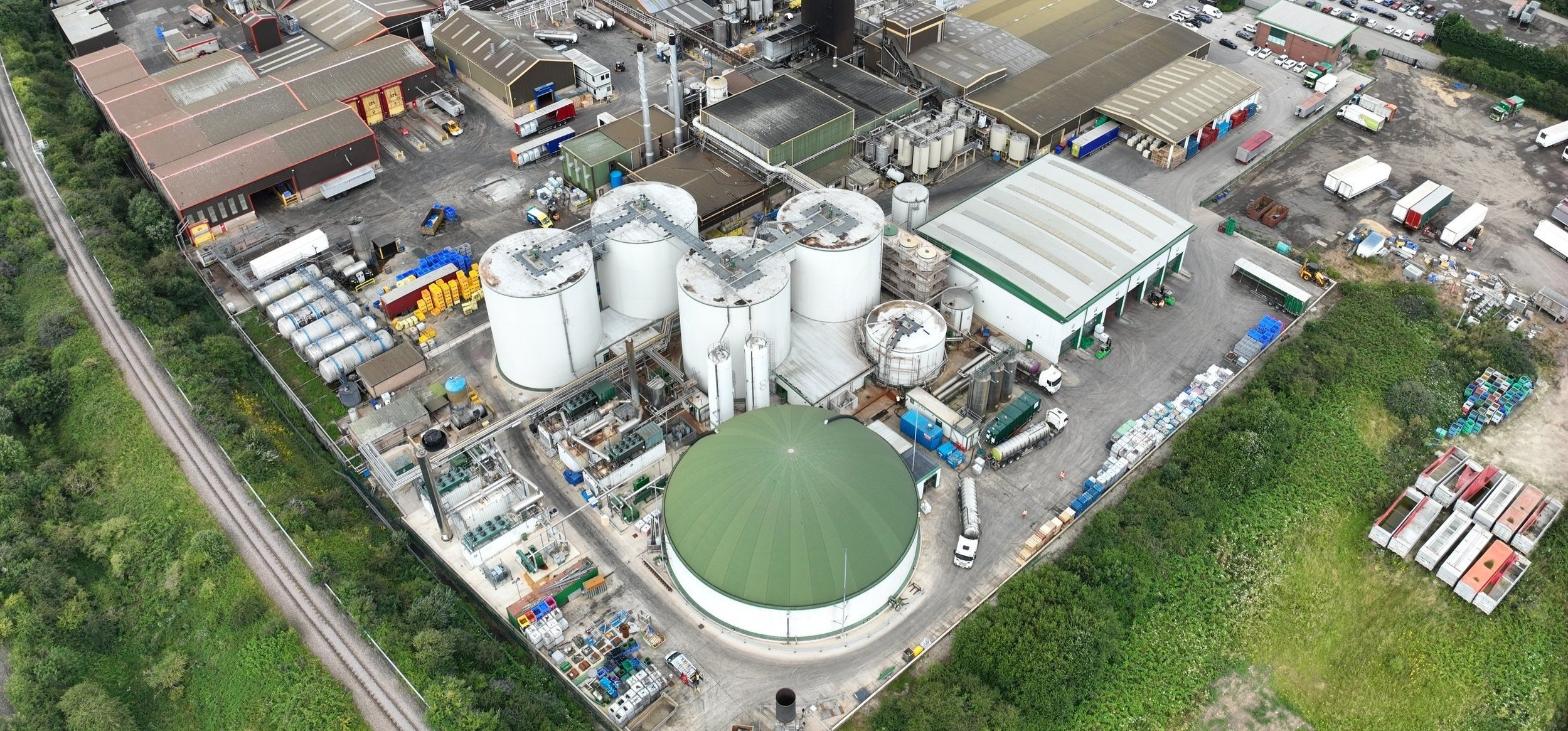UAV Inspection of an Anaerobic Digestion Tank
Confined space inspections represent one of the most significant safety challenges in the industrial sector. At Vertex Access, we specialise in deploying advanced drone technology to turn these high-risk, time-consuming operations into safe, efficient, and data-rich projects. This case study details our internal inspection of a large anaerobic digestion (AD) tank for a waste treatment facility.
Waste Treatment Facility
The Project: Assessing a Critical Hazardous Asset
Our client needed to conduct a routine internal inspection of a critical anaerobic digestion tank. The objective was to get a clear and comprehensive understanding of the tank's condition, specifically to:
Assess the overall structural integrity of the tank lining.
Identify and document any signs of corrosion or material damage.
Evaluate the build-up of sludge and other residual materials.
Ensure all internal components were functioning correctly.
Crucially, the facility was seeking a modern solution that could achieve these goals without resorting to a hazardous and costly traditional confined space entry.
The Challenges
Anaerobic digestion tanks are inherently dangerous environments, making traditional inspection methods exceptionally risky and inefficient. The primary challenges included:
Hazardous Atmosphere: The very nature of the anaerobic process creates an oxygen-deficient atmosphere containing toxic gases like methane and hydrogen sulfide, which can be fatal to people
High-Cost Preparations: Traditional methods require the tank to be fully drained, cleaned, and ventilated—a process that is expensive, time-consuming, and results in significant operational downtime.
Restricted Access: Entry points are typically small and restrictive, making it difficult for personnel and equipment to enter and navigate the complex internal structure safely. Also alternative access methods such as scaffold or rope access are often needed to access the high level areas.
High Level Tank Lining & Connections
Engineering a Safer Approach
Our team deployed a specialised confined-space drone, purpose-built for operating in GPS-denied, hazardous environments. The drone was equipped with a high-resolution camera, powerful onboard lighting, gas sensors, and a LiDAR scanner to deliver multiple data outputs.
Zero-Entry Inspection: The drone was deployed through a small existing access point at ground level, completely eliminating the need for human entry and its associated risks. Our expert pilot navigated the entire internal space remotely from a safe location.
Comprehensive Visual Data: Powerful LED lighting illuminated the tank's interior, allowing the high-resolution camera to capture crystal-clear images and video of the walls, floor, ceiling, and internal pipework.
LiDAR Scanning for 3D Analysis: In addition to visual data, the drone's LiDAR scanner captured millions of data points to create a dimensionally accurate 3D point cloud of the tank's interior. This allows for precise measurements of sludge buildup and deformation analysis.
LiDAR Model Generated from UAV
Safer, Faster, and More Detailed Insights
By replacing a high-risk manual inspection with a remote drone operation, Vertex Access delivered a superior result while fundamentally improving safety and efficiency.
Enhanced Safety: All risks to personnel were completely eliminated.
Reduced Downtime: The inspection was completed in a matter of hours, not days, allowing the tank to return to service much faster.
Comprehensive Data: The client received a complete package of high-resolution images, video footage, and a detailed 3D LiDAR model, providing a far more comprehensive condition record than a traditional inspection could achieve.
This rich dataset empowered the facility to make informed, proactive maintenance decisions with confidence, ensuring the tank's ongoing safety and operational efficiency.
Is a high-risk confined space inspection causing a bottleneck in your operations? Contact Vertex Access to discover how our drone solutions can provide safer, faster, and better data.



